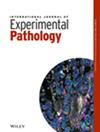The Duration of Mechanical Ventilation is the Main Cause of Bacterial/Fungal Superinfection in Critically Ill Patients with COVID-19 at Altitude
IF 2.2
4区 医学
Q3 PATHOLOGY
引用次数: 0
Abstract
Background. COVID-19 patients in intensive care units suffer from bacterial/fungal superinfections. However, the incidence and cause of such superinfections in high-altitude hospitals remain poorly investigated. Objectives. The aim of this study was to evaluate the frequency of bacterial/fungal superinfection in patients with COVID-19 hospitalized in the intensive care unit (ICU) of the Hospital Universitario San José de Bogotá, Colombia, located at an altitude of 2,651 meters above sea level (high altitude). The impact of corticosteroids on the development of infection was also evaluated. Methods. The cohort included 279 patients, of which 188 (67.4%) were male, 116 (42.3%) were treated with dexamethasone, and 48 (17.2%) were diagnosed with superinfection. A retrospective descriptive cohort study was performed to evaluate the association between bacterial/fungal superinfection frequency, corticosteroid treatment, mechanical ventilation, and mortality rate. Results. Our results showed that bacteremia was the most frequent diagnosis (n=20; 41.6%) of patients with superinfection, followed by pulmonary superinfection (n=17; 35.4%). The most frequently identified causative agents of superinfection were K. pneumoniae (n=23; 26.1%), C. albicans (n=10; 11.4%) and P. aeruginosa (n=8; 9.1%). Moreover, our results showed no association between corticosteroid treatment (or the use of empiric antibiotic treatment) and mortality. However, we found a significant association between bacterial/fungal superinfection and the number of days on mechanical ventilation. However, bacterial/fungal superinfection showed no impact on the mortality rate. Conclusions. We conclude that bacterial/fungal superinfection in ICU highland patients with SARS-CoV-2 treated at Hospital Universitario San José in Bogotá, Colombia, increases mainly in proportion to the time required for mechanical ventilation.机械通气时间是高原地区新冠肺炎危重患者细菌/真菌重复感染的主要原因
背景。重症监护病房的COVID-19患者患有细菌/真菌超感染。然而,在高海拔地区的医院中,这种重复感染的发生率和原因调查仍然很少。本研究的目的是评估位于海拔2651米(高海拔)的哥伦比亚圣何塞大学医院(Universitario San joss de bogot)重症监护病房(ICU)的COVID-19患者细菌/真菌重复感染的频率。同时还评价了皮质类固醇对感染发展的影响。279例患者,其中男性188例(67.4%),地塞米松治疗116例(42.3%),重复感染48例(17.2%)。进行了一项回顾性描述性队列研究,以评估细菌/真菌重复感染频率、皮质类固醇治疗、机械通气和死亡率之间的关系。我们的结果显示,菌血症是最常见的诊断(n=20;41.6%),其次是肺部重复感染(n=17;35.4%)。最常见的重复感染病原体是肺炎克雷伯菌(n=23;26.1%),白色念珠菌(n=10;11.4%)和铜绿假单胞菌(n=8;9.1%)。此外,我们的结果显示皮质类固醇治疗(或经验性抗生素治疗的使用)与死亡率之间没有关联。然而,我们发现细菌/真菌重复感染与机械通气天数之间存在显著关联。然而,细菌/真菌重复感染对死亡率没有影响。结论。我们得出结论,在哥伦比亚波哥大圣何塞大学医院收治的重症监护室高原SARS-CoV-2患者的细菌/真菌重复感染主要与机械通气所需时间成正比。
本文章由计算机程序翻译,如有差异,请以英文原文为准。
求助全文
约1分钟内获得全文
求助全文
来源期刊
CiteScore
4.50
自引率
3.30%
发文量
35
审稿时长
>12 weeks
期刊介绍:
Experimental Pathology encompasses the use of multidisciplinary scientific techniques to investigate the pathogenesis and progression of pathologic processes. The International Journal of Experimental Pathology - IJEP - publishes papers which afford new and imaginative insights into the basic mechanisms underlying human disease, including in vitro work, animal models, and clinical research.
Aiming to report on work that addresses the common theme of mechanism at a cellular and molecular level, IJEP publishes both original experimental investigations and review articles. Recent themes for review series have covered topics as diverse as "Viruses and Cancer", "Granulomatous Diseases", "Stem cells" and "Cardiovascular Pathology".

 求助内容:
求助内容: 应助结果提醒方式:
应助结果提醒方式:


